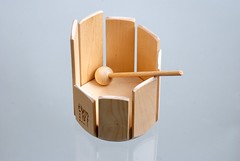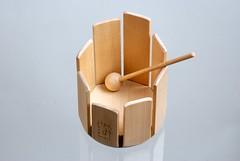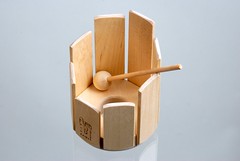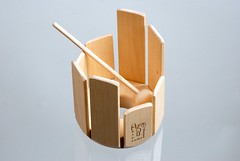
|

|

|
| AURIS-RTK-RTV-RTS | AURIS-RTK | AURIS-RTV |

|

|

|
| AURIS-RTS | AURIS-RHS-RHV-RHK | AURIS-RHV |

|

|

|
| AURIS-RHK | AURIS-RHK | AURIS-RHS |
This natural, wooden instrument stimulates co-operation between hand and ear on a basic level and encourages musical exploration in children of all ages.
It comes in six different varieties; basically the ones with grip hole and the ones without. The grip hole makes it easier for small children to hold the xylophone whereas the one without the grip hole makes it easier to contain and roll around things as marbles, stones and cones inside the instrument.
So which one you choose here depends partly on the age of the children and also what you want to do with it. This is merely a matter of taste than an important pedagogical question.
The same goes for what melody you choose. There are three different arrangements of the sound tongues which gives the stirring xylophones different “melodies” or moving figures.
The “Classic” – moves constantly up- or downwards, depending on what way you stir around in it with the mallet (RTK – without or RHK with hole).
The “Wave” moves up and down and up again whichever direction you stir it (RTV – without or RHV with hole).
The “Melody” creates a little jumping melody no matter direction (RTS – without or RHS -with hole).